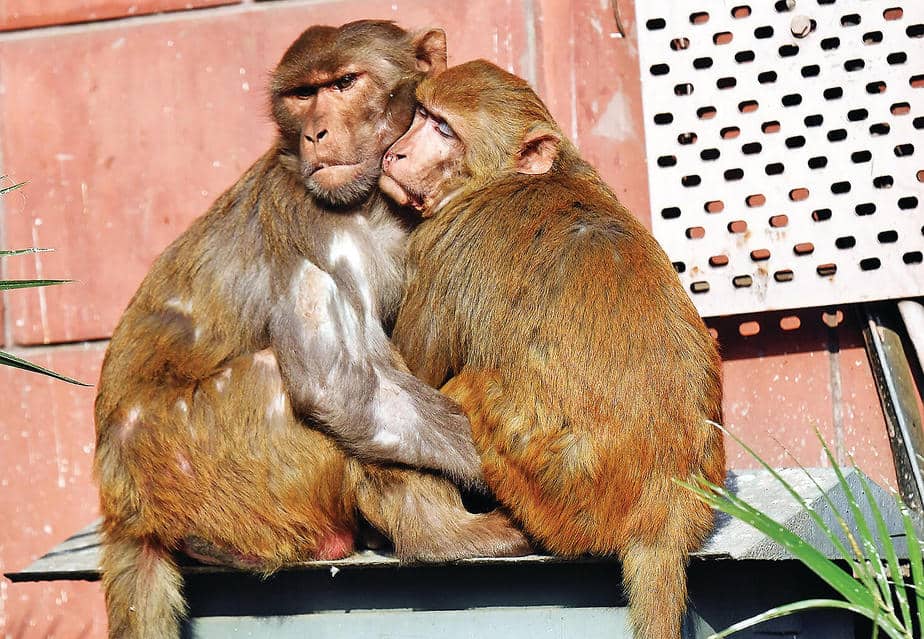Denizens of the wild have found ways to survive in Delhi for decades. Resilient survival instincts made them adapt to life in the metropolis, some even thrive
Wildlife in Delhi. Sounds like an oxymoron. For the species in question are not lizard, spider or rat, but jackal and fox, monkey and langur, porcupines, snake and python, civet cat, even bear and leopard.
How can any wildlife survive in the concrete jungle that Delhi is become? They do find ways to exist in urban settings, some even flourish, multiply to become almost pests. It’s a tribute to their resilience and adaptability that they find ways and means to survive under most testing conditions. Delhi has a reasonable green cover; 20 per cent of its land area is forested. But these wild animals exist in and around human habitations, sometimes in the congested parts of the city, largely hidden.
Ask Kartick Satyanarayan. co-founder and chairman of Wildlife SOS — a Delhi-based NGO into rescue and rehabilitation of wildlife in distress in both urban and rural environments — who wears many hats. He’s a member of the IUCN Bear Specialist Group, the Wildlife Crime Control Bureau, the State Wildlife Advisory Board of the Governments of Jammu and Kashmir and Uttar Pradesh and is also an honorary Wildlife Warden of the Government of NCT Delhi, has been part of operations of animal rescues for the last decade or so: be it airstrip or factory, school, colleges or residential area, even Rashtrapati Bhavan.

“We have built cities on their habitat. They are the original inhabitant, humanity has crushed them into this pitiable state. It’s their resilience that survived in this vicious environment, hidden away in the drains, gutters and nullahs,” he says.
When they sometimes come out of hiding, unlike the monkey which is very upfront about its presence, they make a magnificent spectacle. Recently, a female rhesus macaque or monkey got entangled in a telephone line atop a nearly 80-feet tree outside Udyog Bhawan. Two Wildlife SOS staffers with the help of the Fire Department and some security men rescued the monkey.
Monkeys are always getting into scraps, like the injured one who took shelter in Rashtrapati Bhavan a few months back. There are many instances of nilgai strolling in Lutyen’s Delhi. Last winter, a four-foot-long cobra was rescued from Jawaharlal Nehru University and a few weeks later, a rare predatory bird, Egyptian vulture, was found injured in the extremely busy part of the city, Patparganj.
“Their population is threatened due to factors such as loss of prey base and habitat, poisoning from veterinary drugs, electrocution etc. This is the second Egyptian vulture that we have rescued this year,” Satyanarayan says with fervour.
But some of them, denizens of the animal kingdom, have taken a liking for urban settings, more than their natural habitat. And they multiply like pests, because people feed them more than they need, like rock pigeon and rhesus macaques. A case has been pending in the Delhi High Court for 17 years on the monkey menace filed by the residents of New Friends Colony through advocate Meera Bhatia. Not much has happened. The government has tried all sorts of methods to contain their growth or relocate them out of Delhi. Tamed langurs are employed to scare away unruly monkeys around Parliament House or those who invade houses in search of food.
Recently the Delhi High Court, in pursuant to this long pending case, was informed that ‘immunocontraceptive vaccine’ could be a possible intervention to curb the growing population of monkeys. The Wild Life Institute of India has told the court that it has already imported a vaccine ‘Porzine Zona Pellucida’ for this purpose from America. The vaccine is a success in curbing reproduction of the wild and free-ranging animals. Last heard, it was awaiting custom clearance.
Shifting monkeys out of city limits into neighbouring forests like Asola sanctuary has not proved to be a successful step. There’s already a substantial monkey population there and the city with its abundant supply of food is more attractive for the primates. “With the disappearance of the predators and availability of ready food in urban settings, rhesus macaques multiply at least 30 per cent faster than usual,” explains Satyanarayan. And something substantive needs to be done to check their unprecedented growth. Civic authorities, like the MCDs, have remained fairly ineffective to control the monkey and they blame it on the ‘absence of adequate manpower and equipment.’
Agra offers lessons to Delhi in this regard. A successful PPP project to check the menace of fast increasing populations of monkeys was carried in the city of the Taj. The Agra District Administration and the Agra Development Authority partnered with Wildlife SOS for The Human Primate Conflict Mitigation Project to tackle the booming population of rhesus macaques in 2015. The method used is already a grand success in Hong Kong: to capture and sterilise rhesus monkeys in troops from the high intensity conflict areas and release the animals back to the very same area. They were marked prominently for their identification. The Delhi High Court is contemplating the relative merits of the two methods —‘immunocontraceptive vaccine’ versus sterilisation.
So when you sight a monkey next, do spare a thought: Who’s the real encroacher?





